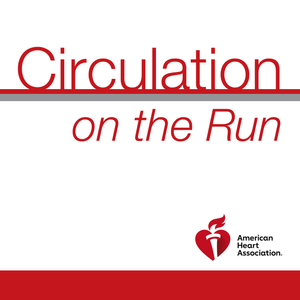
This week, please join author Roderick Tung, editorialist William Stevenson, and Associate Editor Sami Viskin as they discuss the article "First-Line Catheter Ablation of Monomorphic Ventricular Tachycardia in Cardiomyopathy Concurrent with Defibrillator Implantation: The PAUSE-SCD Randomized Trial" and the editorial "Can Early Ablation of Ventricular Tachycardia Improve Survival?"
Dr. Greg Hundley:
Welcome listeners to this June 21st, 2022 issue of Circulation on the Run. And I'm Dr. Greg Hundley, associate editor and director of the Pauley Heart Center at VCU Health in Richmond, Virginia. Listeners, what a very interesting forum that we're going to have in this session today with Dr. Rod Tung, bringing us an article from first line catheter ablation of monomorphic ventricular tachycardia in cardiomyopathy with concurrent defibrillator implantation. Some results from the Pause sudden cardiac death randomized clinical trial.
This article is really interesting because it is collecting data from multiple centers from multiple countries in Asia. But before we get to that article, why don't we grab a cup of coffee and go through some of the other articles in the issue? Well, the first is entitled cardiovascular magnetic resonance for rejection surveillance after cardiac transplantation. And it comes to us from Dr. Jim Pouliopoulos from the Victor Chang Cardiac Research Institute. In this study, CMR based multiparametric mapping was initially assessed in a prospective cross-sectional fashion to establish agreement between cardiovascular magnetic resonance and endomyocardially based measures of cardiac rejection and determine the CMR cutoff values between various cardiac rejection grades.
Then after that, a prospective randomized noninferiority pilot study was undertaken in adult orthotopic heart transplant recipients who were randomized at four weeks post orthotopic heart transplant to either CMR or endomyocardially based rejection surveillance. And clinical endpoints were also assessed at 52 weeks. And so listeners, what did this investigative team find? Well, despite similarities in immunosuppression requirements, kidney function and mortality between the groups, the rates of hospitalization and the rates of infection were lower in the CMR group.
On 15 occasions, patients that were randomized to the CMR arm underwent endomyocardial biopsy for clarification or logistic reasons, representing a 94% reduction in the requirement for endomyocardially based surveillance. And so listeners, a noninvasive CMR based surveillance strategy for evidence of rejection in the first year after orthotopic heart transplantation is feasible. And interesting, listeners, these results really suggest the possibility for further studies to confirm whether CMR and perhaps in combination with other modalities could be used to survey orthotopic heart transplant patients for acute rejection without necessarily having to undergo endomycardial biopsy. There's an excellent editorial by Dr. Jim Fang from the University of Utah who also reviewed this paper.
Well, listeners, let's next turn to the world of preclinical science. And this paper comes to us from professor Simon Sedej from Medical University of Graz. It involves the insulin and insulin growth factor one or IGF-1 pathway. And that is known as a key regulator of cellular metabolism and aging. Now, although its inhibition promotes longevity across species, the effect of attenuated IGF-1 signaling on cardiac imaging really remains controversial. So what did the authors find? Well, they found that cardiomyocyte IGF-1R over expression in mice resulted in physiological hypertrophy and superior cardiac function in early life, but led to accelerated cardiac aging, heart failure and reduced lifespan in late life. Mechanistically, increased cardiomyocyte IGF-1R signaling accentuated cardiac dysfunction by reducing autophagy and mitochondrial oxidative capacity at old age, and therefore clinically pharmacologic inhibition of cardiac IGF-1R signaling in late life could suppress the age related deterioration of cardiac performance and perhaps increase lifespan. And therefore age should be considered as a major outcome determinant in future clinical trials, testing IGF-1R P13K inhibitors for cardiac benefits.
Well listeners, what is our next study? And this study is somewhat related to our feature discussion, which we'll get to in a few minutes. It's from Dr. Paolo Della Bella from San Rafael Hospital, and it is a two phase prospective multicenter randomized clinical trial that was performed to evaluate the benefit of ablation after first implantable cardiovert defibrillator, or ICD shock. And patients with ischemic or nonischemic dilated cardiomyopathy and primary or secondary prevention indication for ICD were enrolled in an initial observational phase until first appropriate shock. And that was phase A of the study. Then afterwards, they...
06/20/22 • 23 min
Generate a badge
Get a badge for your website that links back to this episode
<a href="https://goodpods.com/podcasts/circulation-on-the-run-255644/circulation-june-2128-2022-issue-29730399"> <img src="https://storage.googleapis.com/goodpods-images-bucket/badges/generic-badge-1.svg" alt="listen to circulation june 21/28, 2022 issue on goodpods" style="width: 225px" /> </a>
Copy